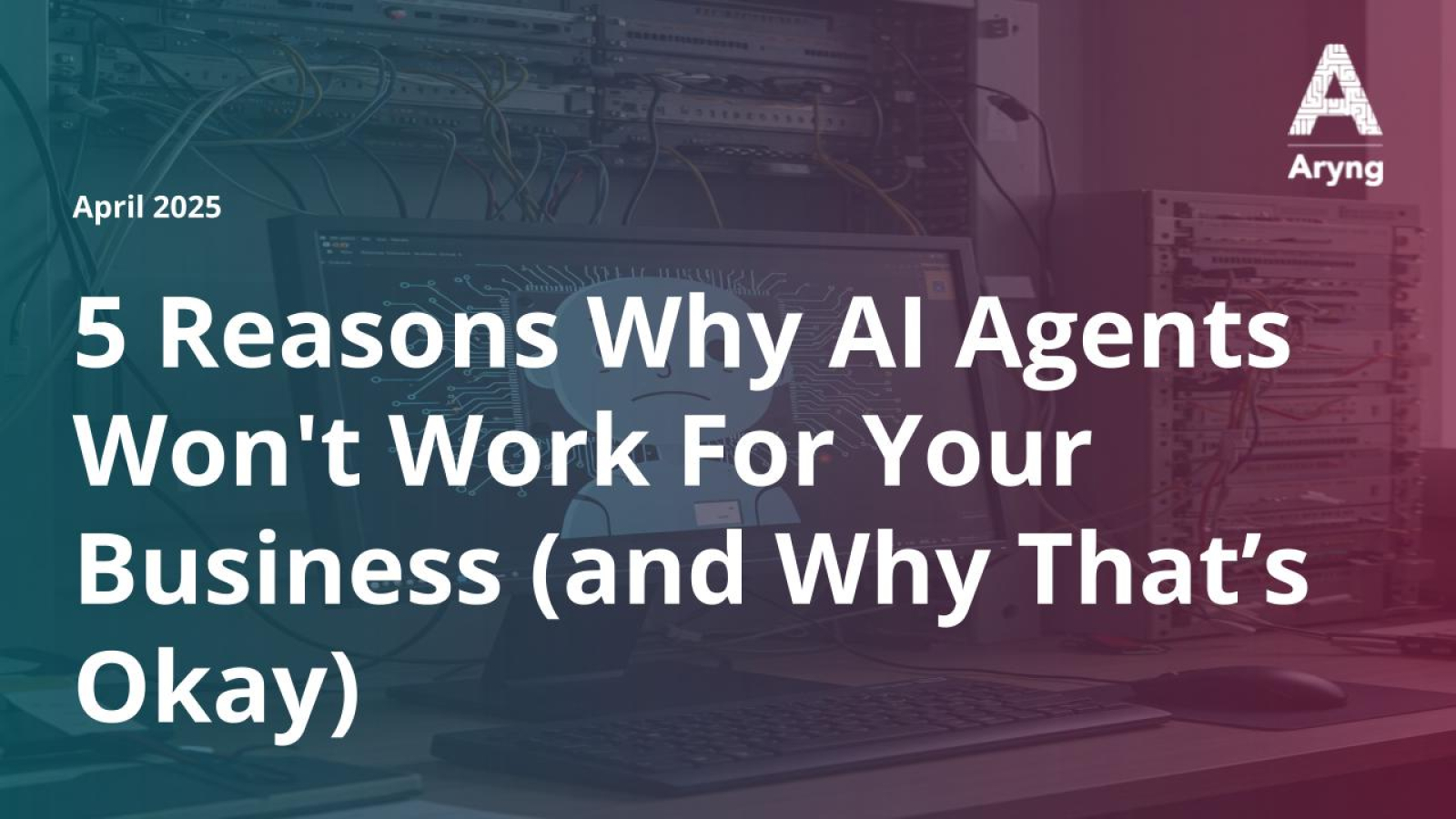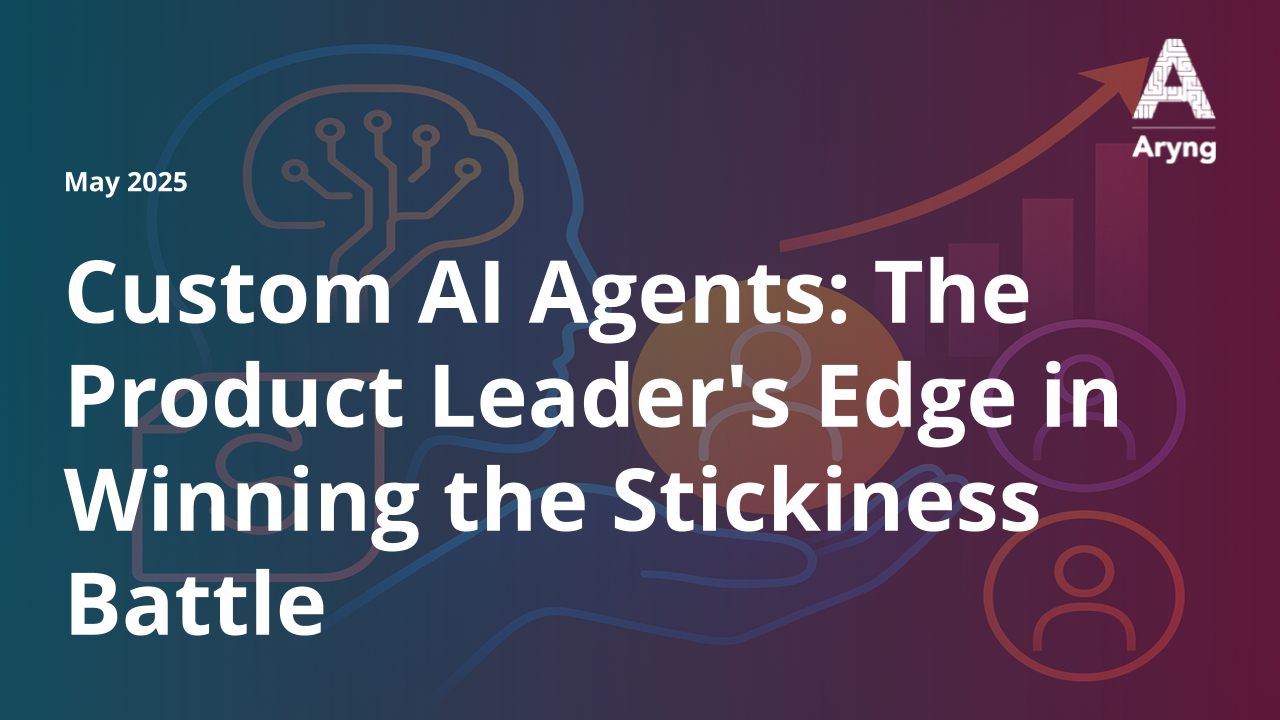Has all the talk about agentic AI and AI agents been making you feel like you are missing out on something essential? Especially because your competition may be out there making the most of this latest technology to race ahead of you? Well, you are not entirely wrong. AI is revolutionizing the way businesses operate in every single industry segment, and the future of GenAI is agentic.
However, you are not too late to jump on the bandwagon. In fact, by not jumping on the bandwagon, you may have done yourself a favor because now you can patiently examine all the available options and choose the sort of AI Agents that deliver the most bang for the buck. Most importantly, you can understand why just any AI Agent won’t work for your business, and would probably end up wasting more time and money than it promises to save you. Here, we break down the top five reasons AI agents fail—and how Aryng Agentics is solving them with an approach rooted in strategy, domain expertise, and proven frameworks.
1. AI Doesn’t Understand Your Business Goals
General AI Is a Tool. What You Need Is a Translator.
All agentic AI solutions today are pitched as magic-bullet solutions for solving inefficiencies, decision bottlenecks, and repetitive manual tasks. Many of them are, in fact, built on sophisticated tech and are capable of a great many things that required human time and effort until now. But, here’s the truth: most AI agents will still fail your business because the gap between AI potential and practical success lies in one often-overlooked truth, i.e., generic AI doesn’t understand your business.
For most SaaS companies that want to scale their business, it makes sense to have a broad target audience for their product. The SaaS companies that develop AI Agents are no different. Sure, they can tell you how the product will address your industry (say, an AI agent for Fintechs) or even your specific use case, but it does not change the fact that the product is made to suit as many businesses as possible. This is why most off-the-shelf AI agents aren’t aligned with your specific KPIs or business outcomes.
The obvious downside to this is that most businesses investing in agentic AI have to either spend considerable time adapting the agent to their workflow, or just give up on it after realizing that the ROI is not that great after all. This may very well be the reason why, despite so many new AI solutions coming out each day, RAND Corporation’s research suggests that “over 80% of these AI projects will fail, which is twice the failure rate for non-AI technology-related startups.”
2. Lack of Customization Means Limited ROI
One-Size-Fits-All AI Fits… No One
Every time a new tech buzzword starts shaking up the business landscape (think Big Data, Predictive Analytics, or GenAI), the market gets flooded by many vendors offering templated solutions for general use-cases.
Right now, for instance, there are nearly infinite AI agents addressing the most popular use-cases, such as chatbot support, marketing automation, etc. While this approach may scratch the surface of certain business needs, it rarely delivers sustained ROI or business transformation.
For example, consider an agent that takes over customer support for your business, reducing the number of support executives by half. That sounds like a great outcome, but was reducing the size of the customer support team really a priority for you? Does that bring you closer to one of your business goals? Will the ROI for this particular agent make a difference to your ARR (or another equally important metric)? Most importantly, does the agent understand your business and your customers, as well as the human resources it’s supposed to fill in for?
If your answer to the majority of such questions is no (or even worse, if you don’t have an answer), then the agent can only, at best, deliver a limited ROI for you.
3. Poor Integration with Your Systems
If Your AI Agent Lives in a Silo, It’s Already Failing
A major pain point with many AI implementations is integration. If your AI agent can’t connect easily with your current tools, data systems, and decision-making workflows, it’s not going to stick. Instead, you’ll end up with yet another standalone tool that disrupts rather than streamlines your workflow.
This isn’t just a tech issue, either; it’s a business continuity problem. AI agents that require manual handovers or don’t talk to your CRM, ERP, or analytics tools create friction and slow teams down. Users either revert to old processes or create inefficient workarounds. Ideally, every agent you use should be designed with your systems in mind. That means thoughtful planning of data pipelines, logic layers, and integration points before a single line of code is written. The result: agents that embed into your workflows with zero disruption.
4. Short-Term Thinking, Long-Term Problems
Set It and Forget It? Forget That.
Many AI deployments operate on the assumption that the work is done once the agent is live. In reality, this is where the real work begins. Agents need to evolve, adapt to new business conditions, and incorporate user feedback. Without an iteration cycle, they become obsolete quickly.
Most vendors don’t offer built-in mechanisms for evaluation and continuous improvement. So, even if the agent performs well at launch, its performance deteriorates over time.
Agentic-design frameworks like BRAIN™ (powered by Aryng’s proprietary BADIR™ framework, which has been used by Fortune 500 companies all over the world since 2011) counter this by making continuous learning, or naturalization, an essential part of the process. This is not just a maintenance step, but a structured loop for testing, evaluating, and improving the agent continuously. Metrics are monitored. User feedback is collected. Adjustments are made.
That’s how an AI agent becomes better aligned over time, not worse.
5. Missing the Human Element
AI Alone Doesn’t Drive Transformation. People Do.
When AI agents are developed in isolation, without involving the people who will use them or the experts who understand the business, the results are often disappointing. Decisions made without stakeholder input rarely reflect business realities. In many organizations, business users are left out of design, testing, and rollout. This leads to poor adoption, resistance to change, and agents that fail to deliver the intended value.
Agentic AI is powerful, but only if it’s purpose-built for your business. Generic tools can create more problems than they solve. Limited integration, short-term thinking, and a lack of business alignment are common failure points.
Clearly, success in this new era of AI won’t come from off-the-shelf agentic solutions or other quick fixes. It will come from those willing to ask hard questions, align technology with purpose, and see AI not as a shortcut, but as a strategic partner. Eventually, the businesses that benefit most from AI agents will be the ones that treat them not as magic, but as genuine resources—deliberate, designed, and deeply integrated with how they create value.


